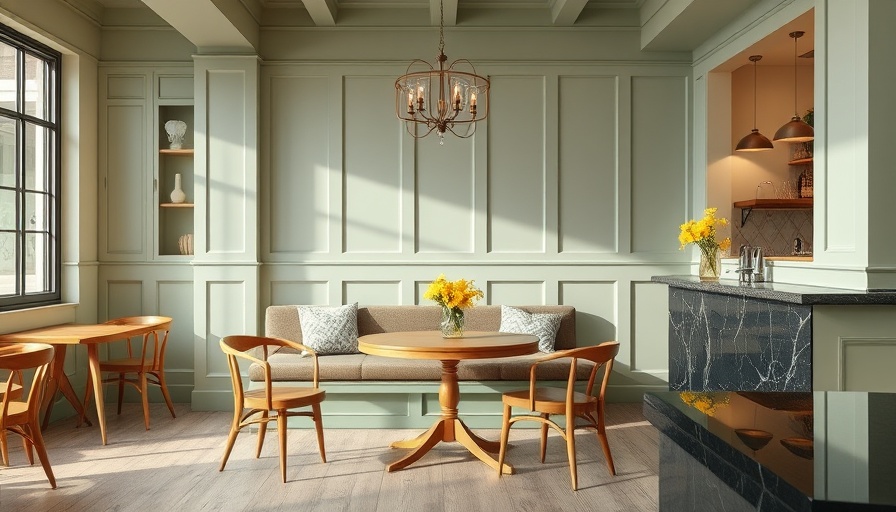
What is Café Core? Establishing Your Own Retreat
Have you ever walked into a local coffee shop and felt instantly at ease? That warm, inviting atmosphere is exactly what the 2025 design trend of café core aims to replicate in our homes. It's about more than just style; it encapsulates the experience of enjoying your favorite beverage in a cozy space that invites relaxation and connection with friends.
The Key Features of Café Core: Create Your Perfect Atmosphere
To bring café core into your home, start with key features that evoke the charm of your beloved neighborhood café. Soft cushions, ambient lighting, and rustic wooden elements can transform your living space into a sanctuary. According to interior designer Kassandra from Shabbyfufu, the essence of café core is inviting. "It’s about the little details that inspire you to linger a bit longer,” Kassandra shares. Think of warm hues and textured fabrics that soften your surroundings, creating a homely nook where you can unwind.
Choosing Cozy Seating: A Heart of the Café Vibe
Your seating arrangements play a pivotal role in crafting the café atmosphere. Whether it’s an intimate kitchen corner with a cozy banquette or an inviting group of comfy chairs, prioritize comfort. Interior designer Marie Flanigan suggests, "Inclusion of plush cushions and a small table for friends or a perfect spot for solo coffee moments enhances the café feel in your space.” A side table where you can place your coffee cup and a nearby bookshelf with your favorite reads can further encourage you to take a break and enjoy the present moment.
Creating Calm with Color and Light
Colors greatly influence your mood, so selecting a calming palette is essential. Incorporate soft, natural tones reminiscent of coffee shop aesthetics — think earthy shades, gentle pastels, or even vibrant accents that reflect your personality. Ambient lighting, too, sets the mood; consider soft pendant lights or warm lamps that fill your living space with a soothing glow while enhancing the cozy feeling that café core embodies.
The Role of Personal Touches: Infuse Your Personality
Your home should reflect who you are. Add personal touches that tell your story or evoke warm memories. These can range from artwork that inspires you to heirloom decorations you cherish. Incorporating greenery, such as easy-care plants or even fresh herbs, encourages life and freshness. According to home staging experts at Vert Nook, welcome elements present in cafés transform your home into a sanctuary, engaging your senses and encouraging positivity.
Conclusion: Your Home as a Sanctuary
By embracing the café core trend, you’re not just decorating — you’re creating a personal retreat in your home. This space will help you slow down and make room for those precious moments of relaxation and connection with loved ones. As you embark on this journey of infusing café core into your home, remember that every detail counts, from the smallest cushion to the larger ambiance you create. The blend of comfort and style can transform your ordinary days into something special, inviting you to relish the cozy comforts of home.
 Add Row
Add Row  Add
Add 




Write A Comment